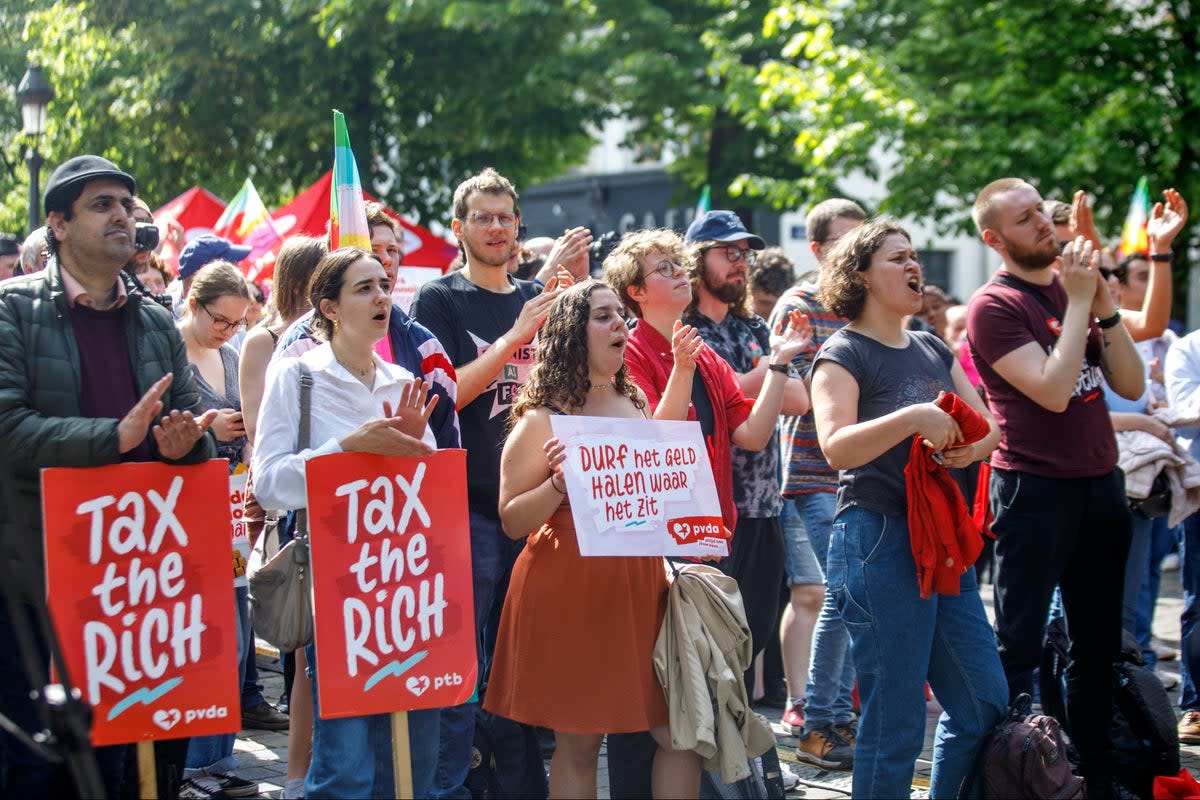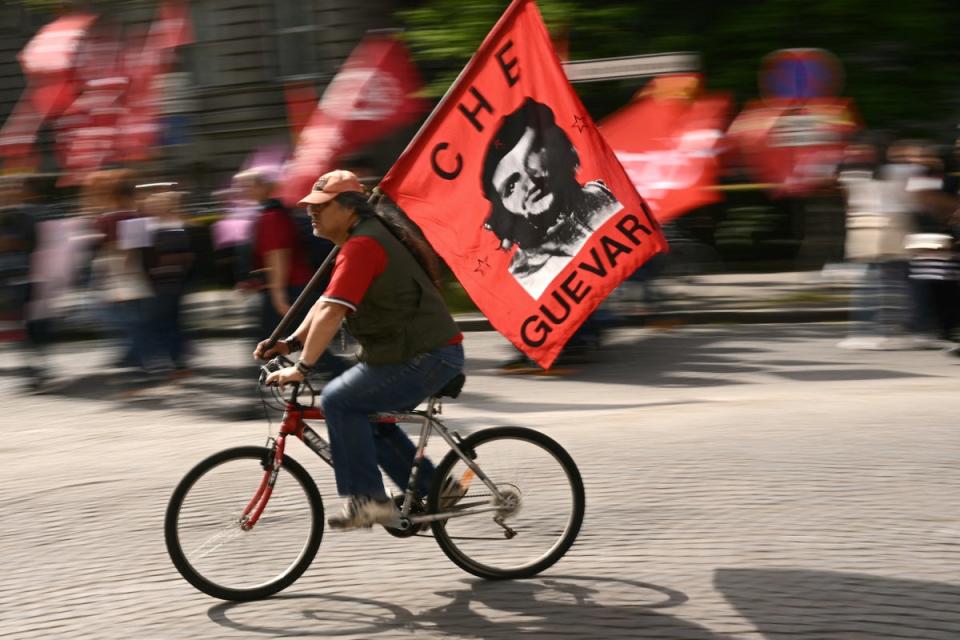What is International Workers’ Day?

International Workers’ Day, otherwise known as May Day or Labour Day, takes place every 1 May and honours the labour movement around the world.
The occasion serves as an opportunity for working people to come together to call attention to important workplace rights issues or political, economic and social injustices in their societies and to celebrate the power of collective action.
This year, mass demonstrations are already prevalent in many countries, with tensions running high over Israel’s war on Hamas in Gaza in particular, which has led to violent clashes between pro-Palestinian student demonstrators and police at Columbia University in New York and UCLA in California.
May Day unrest has already been reported at parades in Istanbul, Turkey, but, for the most part, events marking the date have been impassioned but peaceful, with simple messages like “Tax the rich!” and “Don’t touch the eight-hour workday!” heard in Belgium and Sri Lanka respectively, according to the Associated Press.
In France, workers have used May Day 2024 to demonstrate against this summer’s upcoming Olympic Games and what they regard as inadequate compensation for having to work during the holiday season.
In Iraq, demonstrators have called for improved wages, the reopening of factories and an end to privatisation in certain sectors.
And in Asia, mass gatherings have been seen in Indonesia, South Korea, Japan and the Philippines as workers take to the streets to demand improved conditions in their professional lives.
Here’s everything you need to know about the history of the day.
Why was 1 May chosen as the date for International Workers’ Day?
The date was chosen to commemorate a massive general strike in the United States that began on 1 May 1886.
However, the US and Canada mark their own Labour Day on the first Monday of September, federal holidays that typically attract far greater attention than their international counterpart.

The reason for this, according to historian Peter Linebaugh, is that, in North America, where suspicion of communist activity has raged since the Cold War: “The ruling class did not want to have a very active labour force connected internationally.
“The principle of national patriotism was used against the principle of working-class unity or trade union unity.”
In the immediate postwar era, 1 May was known as “Loyalty Day” in the US and celebrated combat veterans before President Dwight D Eisenhower moved in 1961 to designate it “Law Day” instead at the suggestion of the American Bar Association.
What happened in 1886?
The events of that year were centred around industrial Chicago and saw labour activists and anarchists join the American Federation of Labor’s call to protest long working hours, deteriorating workplace conditions and large-scale unemployment caused by technological advances that had simultaneously served to make magnates, owners and employers wealthy.
The multi-day strike that ensued turned violent on 3 May when demonstrators clashed with police near the city’s McCormick Reaper plant and again a day later at a meeting staged at Haymarket Square, which would lead to the deaths of both strikers and officers – an episode that became known as the Haymarket Affair.

Eight men were eventually placed on trial and four of them hanged after being accused of placing a bomb that exploded and killed combatants on both sides, despite a lack of evidence and a campaign on their behalf that found popular support in Europe and Latin America.
August Spies, one of the convicted men doomed to execution, secured his place in the history books by declaring: “There will come a time when our silence will be more powerful than the voices you strangle today.”
The horror of the Haymarket affair inspired the Marxist International Socialist Congress, at its meeting in Paris, France, in 1889, to choose the date for an annual international day on which to remember the ongoing struggles of working people across the globe and advocate for an eight-hour working day as standard.
What is its subsequent history in the United States?
Despite the later postwar opposition to what some considered a “communist” or “anti-capitalist” celebration, International Workers’ Day was marked by American activists throughout the first half of the 20th century.
Occasionally this led to further violence, as was the case in New York, Boston, Cleveland and Milwaukee in 1919, but the day proved an important unifier during the hard days of the Great Depression in the 1930s when the out-of-work and destitute came together in American cities to demand a solution from their government, pressure that played a part in eventually yielding Franklin D Roosevelt’s New Deal economic reforms.
More recently, left-wing groups have used 1 May as a symbolic date on which to hold major demonstrations to draw attention to such contemporary concerns as immigrants’ rights (2006), the malign influence of Wall Street (2012) and the protection of retail workers during the Covid-19 pandemic (2020).

